The Best, Coolest, and Weirdest Gadgets at CES 2023
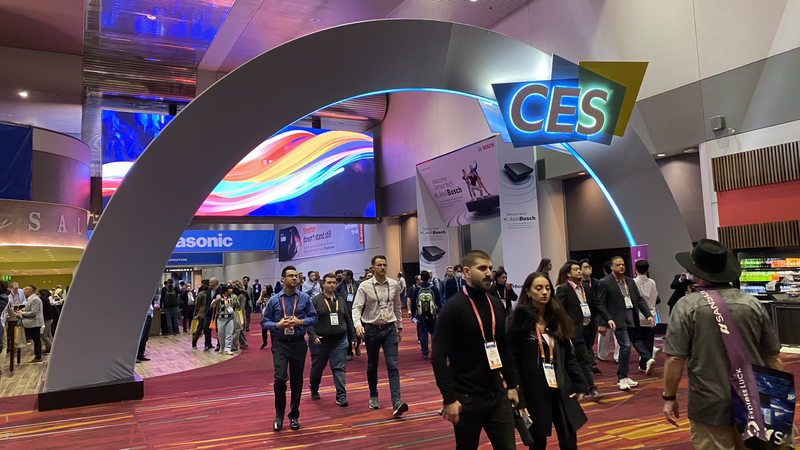
CES 2023 marked the annual tech expo’s triumphant return after it went virtual in 2021 and faced lackluster attention in 2022. The general vibe? Well, you know that feeling you get when you had three months to write an essay but only got it done the week it was due? Las Vegas was certainly packed this year, but despite having two smaller shows before this year’s CES, the major keynote’s big announcements this year were either niche, expected, or didn’t give much info away.
That’s where we come in. Our journalists have spent the last week wandering the show floor and meeting with companies to track down the actually interesting stuff at this year’s CES. From an e-Ink Windows laptop to 3D monitors, there’s still plenty that we’re excited to share, and that you might not have seen until now.
Read more
Withings U-Scan
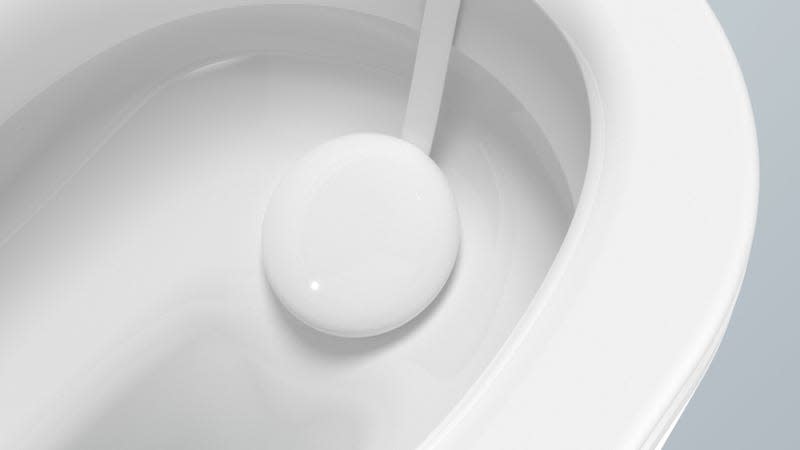
Withings is a brand well known for its health and fitness tracking tech, including smartwatches, smart bathroom scales, and even smart thermometers, but at CES 2023 it debuted one of the most peculiar health gadgets we’ve seen to date. The Withings U-Scan is the first gadget you actually need to drop in the toilet, as it’s designed to make health assessments by analyzing a user’s urine. It can even differentiate between different people based on their stream.
A heat-triggered pump automatically draws in a urine sample and sends it through a “microfluidic circuit” to a cartridge filled with three months worth of test pods, where chemical reactions are triggered when certain biomarkers are detected. An optical sensor analyzing color-changing test strips then allows a connected app to make assessments on everything from fertility cycles to a user’s daily intake of water and nutrients, without having to send anything off to a lab. -Andrew Liszewski
Acer eKinekt BD 3
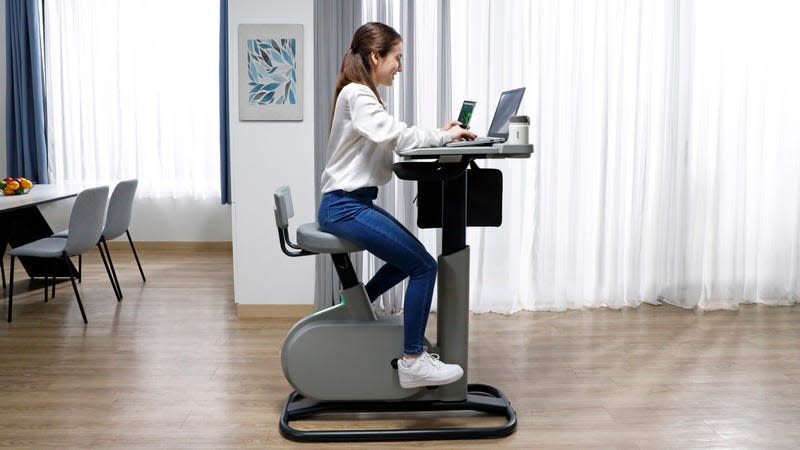
It can be hard to find ways to stay active when working from home without a commute or having to run around an office all day. Acer thinks its eKinekt BD 3 is a clever solution to that problem with a compact desk perched atop a comfortable exercise bike allowing users to pedal and feel the burn throughout the work day.
The eKinekt BD 3 goes one step further with a built-in electric generator, so all those burned calories are turned into electricity that can be used to charge a laptop and smartphone connected through USB-A and USB-C ports built into the desk. Acer estimates that when plugged into the USB-C port, an iPhone 14 can be fully recharged in 1.5 to 2.5 hours, depending on a user’s pedaling speed. -Andrew Liszewski
Arcade1Up Infinity Game Board
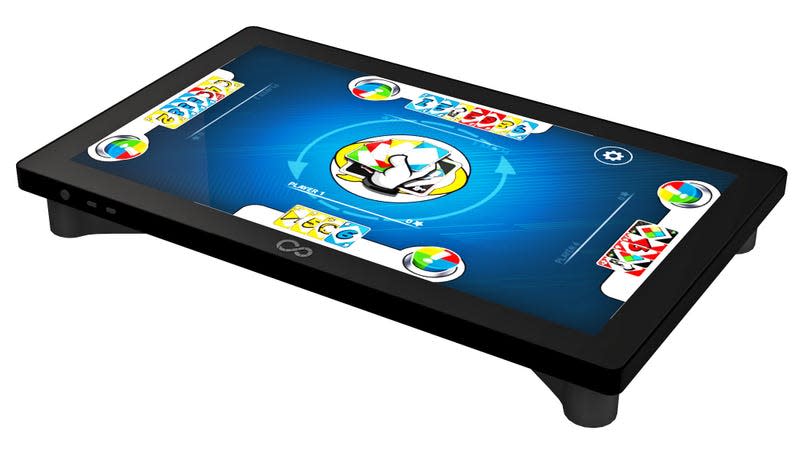
Arcade1Up has had more success than most when it comes to making the board game experience digital. Its Infinity Game Table paired a giant touchscreen on legs with popular titles like Monopoly, Scrabble, and Ticket to Ride. Now the new Infinity Game Board is an attempt to make the Infinity Game Table more portable by removing the legs and shrinking the screen, so it can be used on tables, on a sofa, or even in bed.
The Infinity Game Board’s 18-inch touchscreen is smaller than the Game Table’s 24 and 32-inch options, but includes access to the same library of around 100 board games, puzzles, and other action titles. Its smaller footprint also comes with a smaller price tag. Where as the Infinity Game Table ranged in price from $650 to $850, the new Infinity Game Board is expected to sell for $500. -Andrew Liszewski
Roland 50th Anniversary Concept Piano
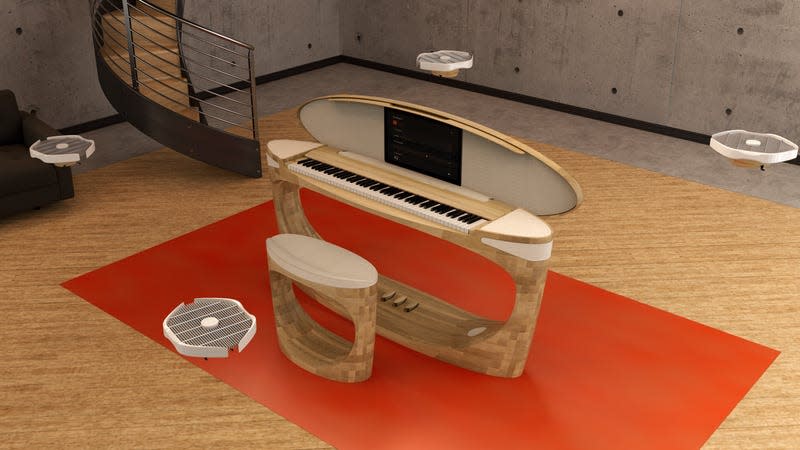
We’re usually 100% on board with concepts providing a tantalizing look at the future of consumer tech, though we’re not entirely sold on Roland’s ideas of how future electronic pianos will effectively fill a performance space with sound. The company’s 50th Anniversary Concept Model Piano is an absolute work of art, made from Japanese oak with a highly-contoured design that even features a large screen hidden in the lid for displaying sheet music and piano lessons.
Where it starts to lose us is the swarm of flying speaker drones that are supposed to complement the array of 14 speakers built into the piano itself that can be position to broadcast sound in any direction. We’ve yet to encounter a drone without that distinct and constant whine of electronic motors, which is the last thing we want to hear when trying to enjoy a pianist’s performance. -Andrew Liszewski
Razer Leviathan V2 Pro Desktop Soundbar
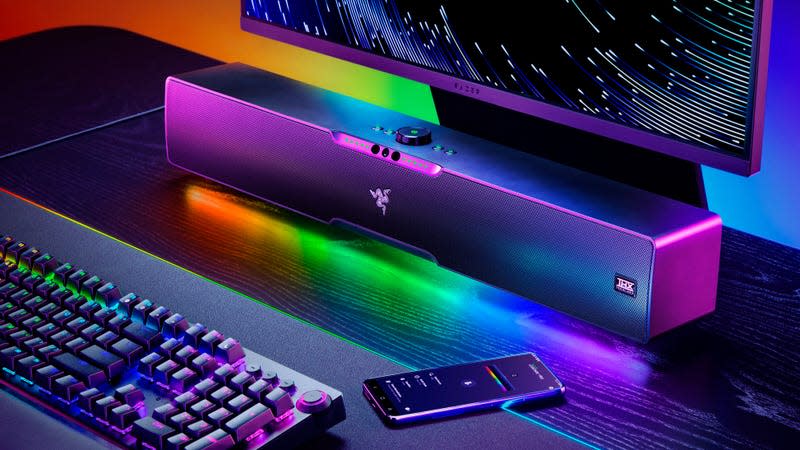
We have yet to be convinced that using clever acoustical tricks from a single speaker is a genuine replacement for multiple speakers positioned around a room when trying to create a true surround sound effect. But we also haven’t had a chance to hear Razer’s new Leviathan V2 Pro desktop soundbar, which promises a 3D sound effect without a sweet spot.
How does the Razer Leviathan V2 Pro deliver on these promises? It uses a combination of clever beamforming tricks, manipulating the sounds coming from its multiple front-firing drivers so they instead seem to be coming from around the room, and an infrared camera that tracks the location of a user’s head in real-time and adjusts where the beamforming tricks are directed. So even if a user is moving around and fidgeting during an intense game, they’re always hearing the intended 3D effect. -Andrew Liszewski
BMW i Vision Dee Concept Car
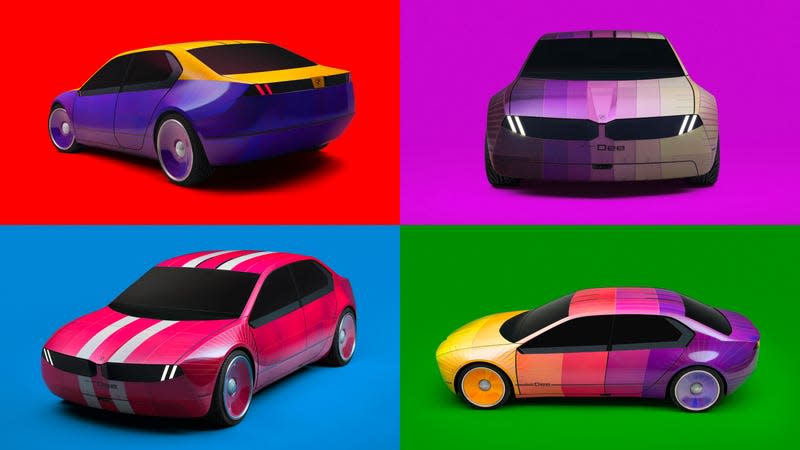
BMW stole the show at CES 2022 with its BMW iX Flow concept car that was wrapped in flexible black and white electronic ink panels allowing the vehicle to change color and even display ever-changing patterns and custom design elements on its exterior. For 2023, BMW has followed up with the i Vision Dee concept, with “Dee” being short for “Digital Emotional Experience.”
Wrapped in E Ink’s new full color Prism 3 electronic paper panels, the i Vision Dee’s exterior can be further customized with patterns and designs in vibrant colors that can be altered at the push of a button to suit the driver’s mood, or even match their outfit. Where the BMW i Vision Dee starts to lose our attention is a minimalist interior packed with invisible controls and hidden buttons that sound even worse than using a touchscreen when driving, along with displays on all the windows letting drivers see the real world outside, or escape to a virtual one. -Andrew Liszewski
Sony Afeela

There’s usually a lot of thought that goes into the naming of a car in order to invoke a specific feeling with consumers. An Acura sounds like it was designed with extreme precision, a Challenger sounds like it can best any car in a drag race, and a Bronco sounds like you can drive it off into the unpaved wilds of America. As for Sony and Honda’s Afeela? Ironically, we’re not sure what to feel.
According to Sony Honda Mobility, the joint venture that hopes to deliver the new electric vehicle to North America sometime in 2026, Afeela “expresses an interactive relationship where people “FEEL” mobility as an intelligent entity, and mobility “FEELS” people and society using sensing and network IT technologies.” But all that marketing vomit, along with an uninspired logo that looks like the default font in every word processor, and a forgettable car design, has us wondering if the Afeela will be Sony’s next Minidisc instead of Sony’s next Walkman. -Andrew Liszewski
Brava Glass
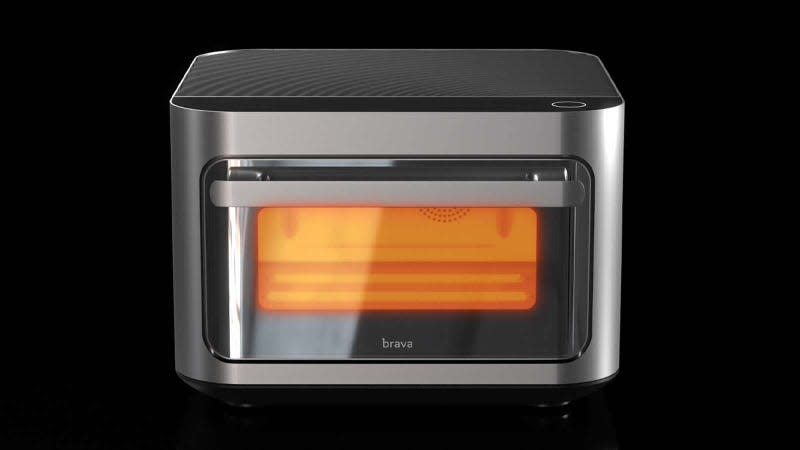
A compact, countertop oven that can heat up in seconds and use less power to cook a meal than most ovens use just to preheat is a very tantalizing idea. The Brava smart oven is like an Easy-Bake Oven for adults, using both visible and non-visible light to cook an entire meal at the same time, including foods that need to cook at different temperatures. Unfortunately, we walked away a bit disappointed with the execution when we reviewed the original Brava back in 2018, and over four years later, we were hoping for more improvements with the new Brava Glass than just the addition of a see-through window on the front. -Andrew Liszewski
Bosch RideCare Dashcam
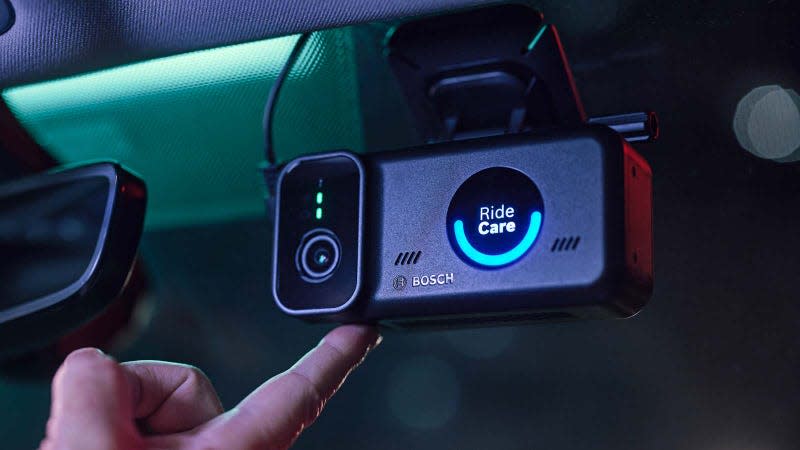
Being a rideshare driver can be a scary experience, and not just because of the way companies like Uber treat its drivers. With nothing but a smartphone app as their dispatcher, rideshare drivers are more or less on their own to deal with a constant stream of strangers who climb aboard for a ride—some pleasant, some not.
Bosch’s RideCare looks like a standard windshield-mounted dashcam, and works like one too, capturing footage of the road ahead so a driver has video proof in the event of an accident they didn’t cause. But the RideCare includes a second camera capturing the interior of the vehicle too, along with a discreet, wireless panic button a driver can install anywhere and press to activate an emergency call to a Bosch-run call center staffed with operators who have access to a live feed from inside the vehicle so they can assess the situation and contact emergency services if the driver is unable to do so themselves. -Andrew Liszewski
Twinkly Entertainment Hub

This announcement quickly got buried under the mountain of CES announcements, but it’s one that’s going to have Christmas fanatics already thinking about their 2023 holiday decor. Twinkly, the company that makes smart Christmas lights and other lighting products that can display animated designs and patterns through a clever mapping process facilitated by a smartphone camera, is releasing a new desktop app that allow the individual lights on a Christmas tree to play video content.
In other words, the twinkling lights on your Christmas tree will actually be able to display your favorite Christmas movies too like the individual glowing pixels on an LCD display. If you’ve been on the hunt for a way to finally outdo your neighbor’s holiday displays, this is it. -Andrew Liszewski
Self-transforming Optimus Prime robot
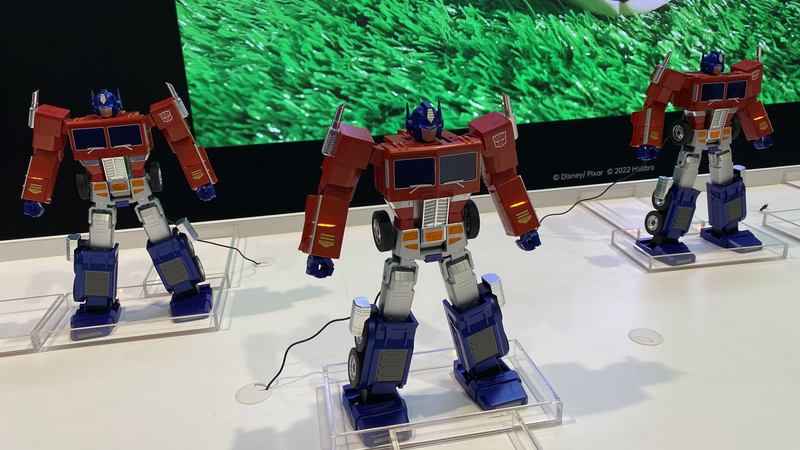
Getting Robosen’s self-transforming Optimus Prime figure, which comes in a limited edition 19-inch size and a more attainable 16 inch size, is a bit like bringing a theme park attraction into your home. This figure, which costs between $600 and $1000 depending on the size you pick, is certainly an investment. But what you get in return is a fully programmable robot with more points of articulation than even the TV counterpart that inspired it, with the ability to shadowbox, play air guitar, drive around like an RC car, shout catch phrases, respond to voice commands, and even walk around. Users can even submit their programmed movement routines for Prime to the official app, and if they’re good enough, Robosen will make them available to the public.
It’s been available since 2021, but it’s worth highlighting again, as the full-size version is a limited edition. Once it’s gone, it’s gone - Michelle Ehrhardt
A combination Nintendo Switch and Meta Quest
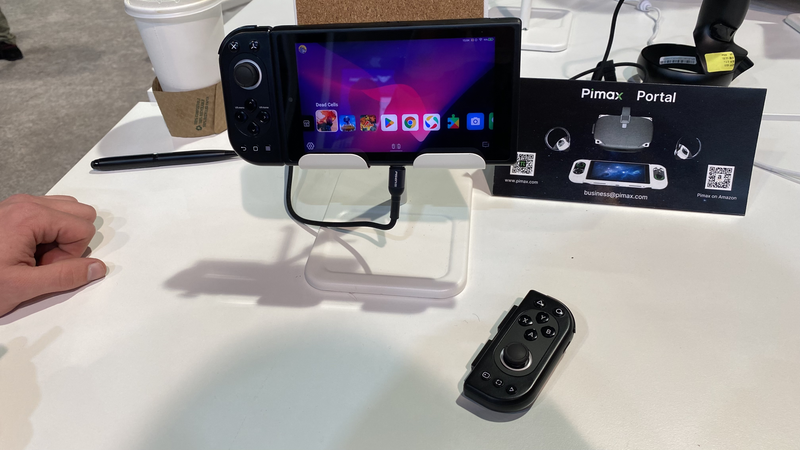
The Pimax Portal is an ambitious project that’s essentially looking to combine a Nintendo Switch with a Meta Quest. Running Qualcomm’s Snapdragon XR2 chip, the device has more than enough power to run Android games or cloud gaming, and you can get it standalone if that’s where your needs end. What that’ll snag you is the 4K handheld, which comes in either LCD or QLED, plus the two joycon-like controllers, which attach to the side of the device (or each other) with some scary strong magnets. Seriously, be careful to avoid pinching.
But spend $100 more on a VR bundle, and you’ll also get a headset to slot the Portal into, plus two VR controllers. The Portal’s got 6 cameras on the back, allowing it to do room scale VR, and anecdotally, I found it was competitive with the Meta Quest 2 when walking around a virtual Grand Canyon while wearing it. Pimax claims it’s actually 50% faster, but we’ll have to review it ourselves to confirm that. -Michelle Ehrhardt
A PC Case that looks like a shark
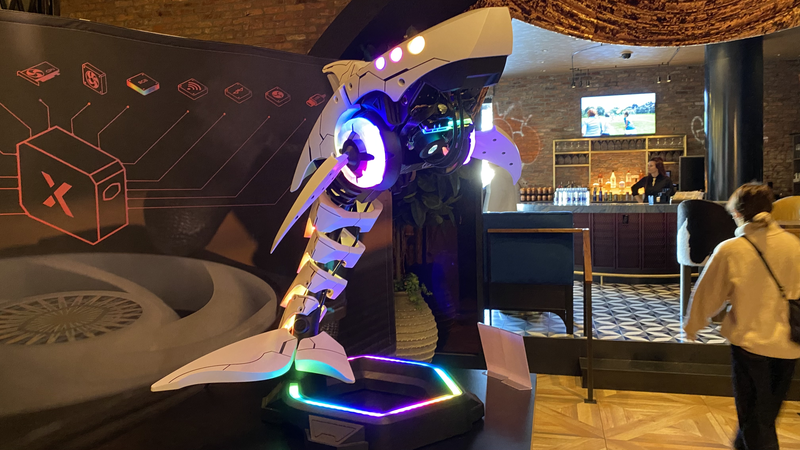
Why are PC cases just boxes? That’s what Cooler Master asked itself this CES, when it showed the Shark X and Sneaker X gaming PCs to the public. Based on user case mods, these computers fit mini-ITX gaming PCs complete with RTX 30 and 40 series graphics cards into some wild shapes. I’ve always dreamed of a PC that fits into a lightsaber, so maybe Cooler Master can talk to Disney next. - Michelle Ehrhardt
Cooler Master’s gaming egg
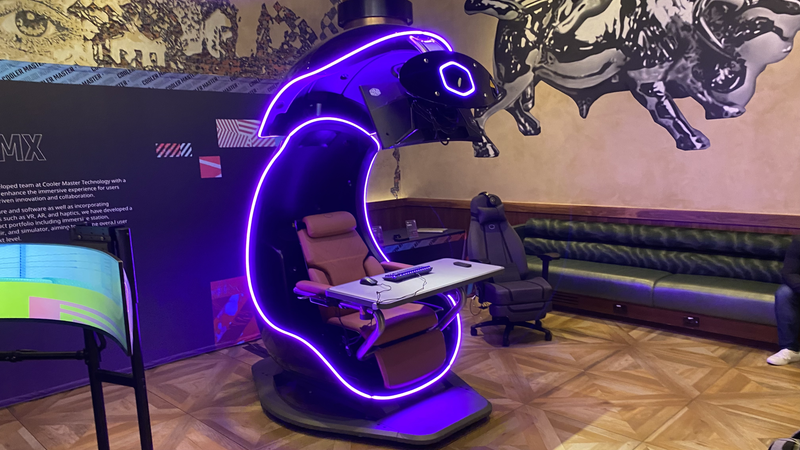
Gaming pods that strap you into a recliner and lower monitor arms over you are nothing new at this point, but Cooler Master’s Orb X wants to take them to the office. Marketed more as a multipurpose workstation, the Orb X’s marketing material shows plenty of fancy businessmen strapping themselves into this RGB-laden computing egg. Perhaps that’s why the Orb X doesn’t actually come with its own PC or monitors—you’ll need to supply your own, which is a pretty hefty ask given that this machine costs $15,000. Still, at least the integrated desk has a wireless charger built into it. - Michelle Ehrhardt
Hasbro Selfie Series Figures
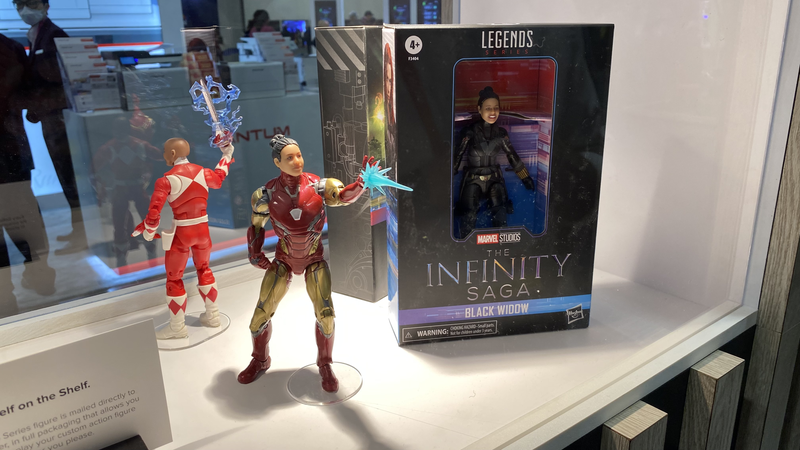
We’ve covered Hasbro’s Selfie Series, which lets you put a 3D printed replica of your head on top of a figure of one of your favorite heroes, before. But I got to try it myself at this year’s CES, and I’m excited to see the resulting figure when it finally arrives at my door. The Selfie Series works by first having you scan your face from several different angles for about a minute. Then, it shows you a preview of the model your figure will have, and you can rescan until you get one you’re happy with. After that, you choose a hairstyle (your natural hair is not scanned), hair color, and which character you want to head swap with. Wait 45 days for printing and shipping, and you’ve got your figure.
I did two scans for my figure, and I’ve got some advice—don’t be afraid to emote. My first scan, with a neutral expression, turned out pretty boring. I tried again with a smile, and was impressed by how natural the expression looked in the scan preview. Not serial killer-y at all! Now to wait for my figure and see if I can say the same thing about the final product. -Michelle Ehrhardt
Asus’ Glassesless 3D Laptop
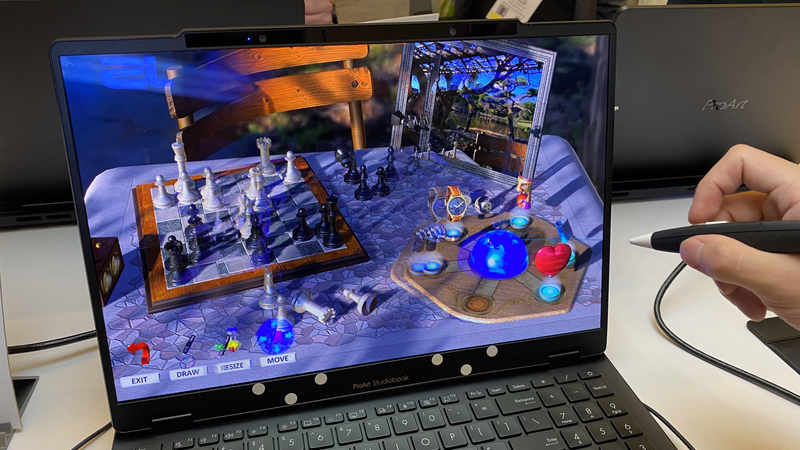
A contender for one of my personal favorite CES displays, the Asus ProArt Studiobook 16 3D is like a 3DS for grown ups. Asus’ ProArt Studiobook creator laptop line isn’t new, but this one integrates a glasses-less 3D screen that I wish I could more accurately depict here. You have to see it in person to get the 3D effect, but despite being a nonbeliever at first... I have to admit that the thing just works. I saw it in a demo where I also got to hold a 3D pen that let me pick objects up and manipulate them in 3D space, and the result wasn’t too dissimilar to my time on my personal Meta Quest 2. Only, this time, I didn’t have to wear a bulky headset the whole time I was using the laptop.
The 3D doesn’t require you to sit in one particular spot for it to take effect, thanks to clever use of the webcam, and you can adjust the intensity of the effect with a slider, right down to making the display 2D. Disney+ better make 3D versions of the Avatar movies available soon, because displays like this make watching those films at home easy. -Michelle Ehrhardt
Garmin’s Camera-Powered In Car Entertainment System
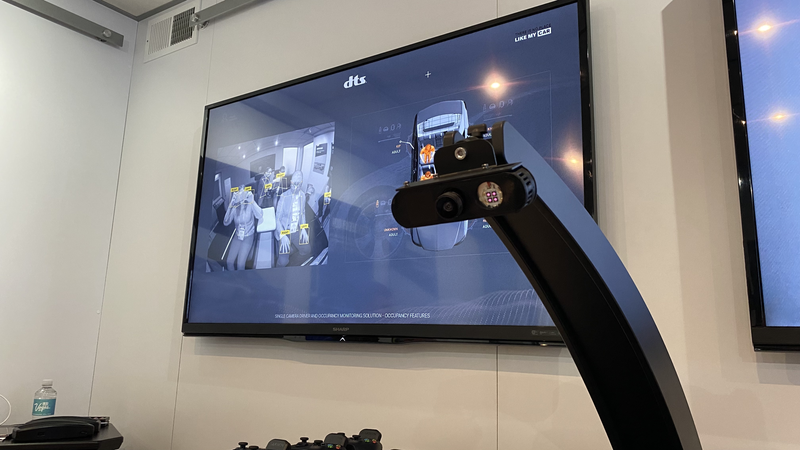
In-car entertainment system mock-ups are a CES favorite, but Garmin’s latest stands out thanks to clever use of a camera that overlooks the cabin. The demo I attended had four people sit in a “car,” and then a camera made us our own profiles and tracked our movements. With that accomplished, it could do things like allow Bluetooth devices to pair by simply bringing them to my seat. It could even track a device’s location in the car, so you could see in an app where your earbuds are. Useful if you’re constantly dropping them under the seat. -Michelle Ehrhardt
Lenovo’s E Ink Laptop
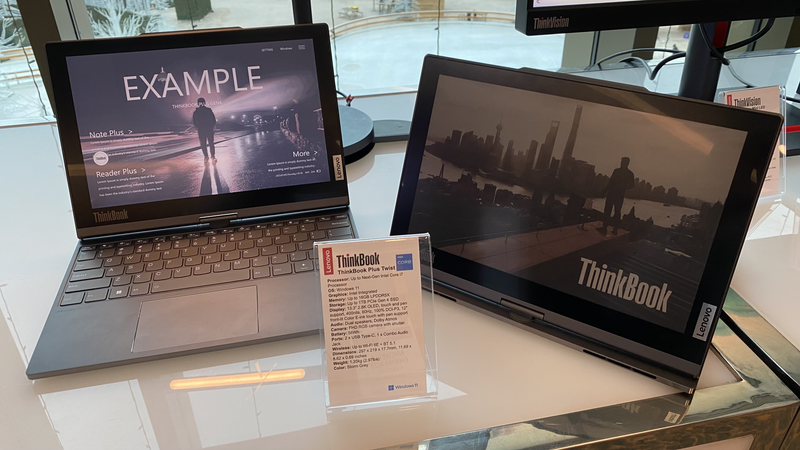
Type in dim, low color gamut, 12 fps glory on the new Lenovo ThinkBook Plus Twist! This laptop is a continuation of Lenovo’s prior ThinkBook Plus devices, which had E Ink screens on their lids so that you could keep a document up even with your laptop closed. Now, this new device lets you swivel that E Ink screen to the front, so you can have a fully functional E Ink Windows computer. Don’t worry—the other side of the display has an OLED panel. An added benefit to this setup is that you can use either the E Ink or OLED panel as a display for a tablet mode by simply closing the laptop’s lid. - Michelle Ehrhardt
Sony’s Accessible PS5 Controller
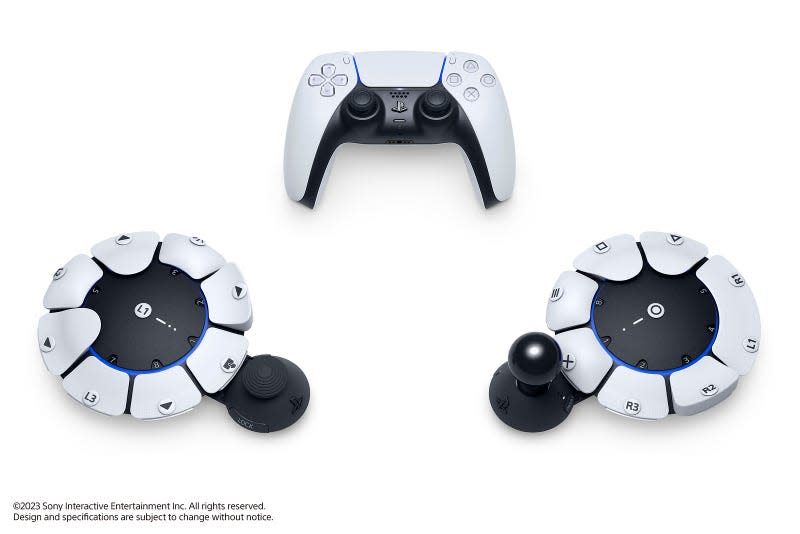
Better late than never. Xbox has been the reigning champion of accessible controllers ever since it announced it Adaptive Controller kit in 2018, but Sony’s finally looking to play catchup with its new “Project Leonardo.” Announced during Sony’s CES keynote, Project Leonardo was made in collaboration with organizations like AbleGamers, SpecialEffect and Stack Up. It seems to be pretty modular, coming with lots of different stick, paddle, trigger, and button options, and Sony promises that gamers will be able to “reposition the analog sticks as close together or as far apart as they like” -Michelle Ehrhardt
Nowatch
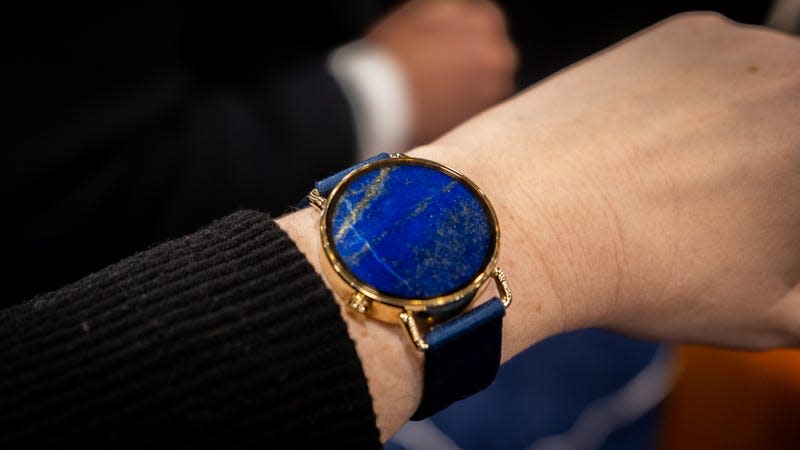
The Nowatch is an interesting concept, if only because it eliminates the need for a smartwatch screen. Nowatch bills itself as a subtle “awareable” that tracks body stats and syncs up to Android or iOS to aggregate the data. The wearable promises real-time feedback for movement, sleep, and stress, plus recovery tools for fitness-centric folks or those who might have pushed themselves too hard. Nowatch uses Philips’ EDA (Electro Dermal Activity) Biosensing Technology, which measures changes in your sweat glands based on skin contact.
What I liked about this watch is how pretty it is in person. The gemstone “faces” are magnetic, so you can swap them in and out as your outfits call for it. The Nowatch will be available on Jan. 9 for $500, with each gemstone “watch face” sold separately. —Florence Ion
Switchbot Bot
I’m a sucker for a cute little gadget, and this one caught my eye for its relative simplicity. This is the Switchbot Bot—it’s a button pusher. It joins a family of other devices, including smart light bulbs, shades, and a curtain controller. Moreover, Switchbot’s devices will be Matter compliant in the future, so you won’t need the separate SwitchBot Hub to connect them to your smart home. —Florence Ion
Speaking of Matter...
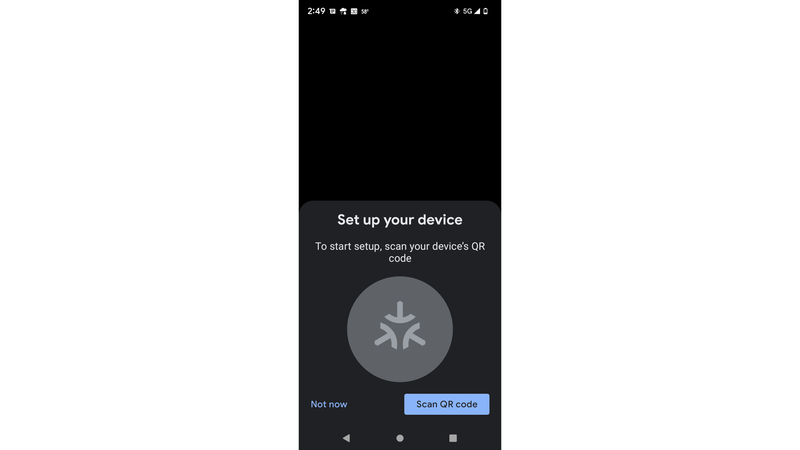
CES 2023 was a massive showcase for all the new devices rolling out with Matter compatibility. In particular, accessory-maker Eve was showing off demonstrations of Matter’s built-in multi-admin capabilities, which will reduce many headaches associated with a multi-ecosystem smart home.
But the most compelling demo of Matter for me, personally, is in this screenshot. When I walked by the Nanoleaf booth, my Pixel 7, equipped with the latest version of Android 13, buzzed me to let me know the phone was ready to pair with a device at the booth. It was my first experience with the new technology, which only officially launched two months ago. It’s much easier than the previous method of adding connected gadgets to the home. It’ll be interesting to see if Matter’s existence will help reignite the adoption of the smart home among the masses. But at the very least, it will make those already living in connected homes feel a little less of a headache when managing devices. —Florence Ion
Google Maps HD behind the wheel
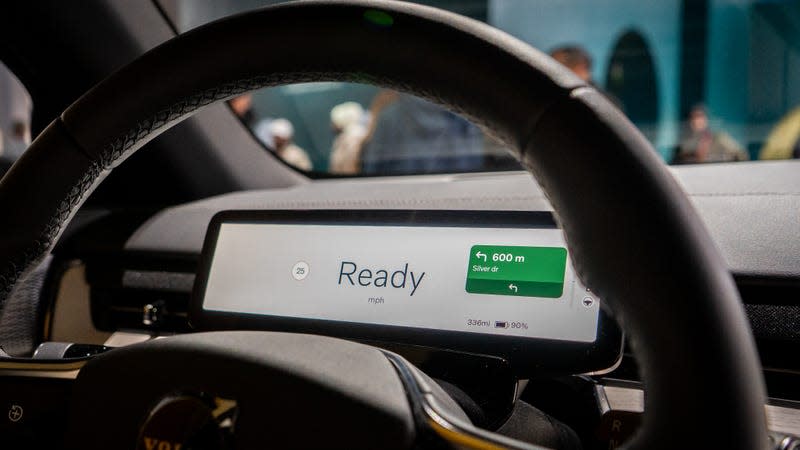
We already went hands-on with the new Android Auto, which Google announced is officially rolling out to all cars this week. But I also got to sit inside the new Volvo EX90, infused with Android Automotive integration. I didn’t see the new Google Maps HD in action, but I did see what the display behind the wheel will look like in person. —Florence Ion
Satellite connectivity coming to Android phones this year
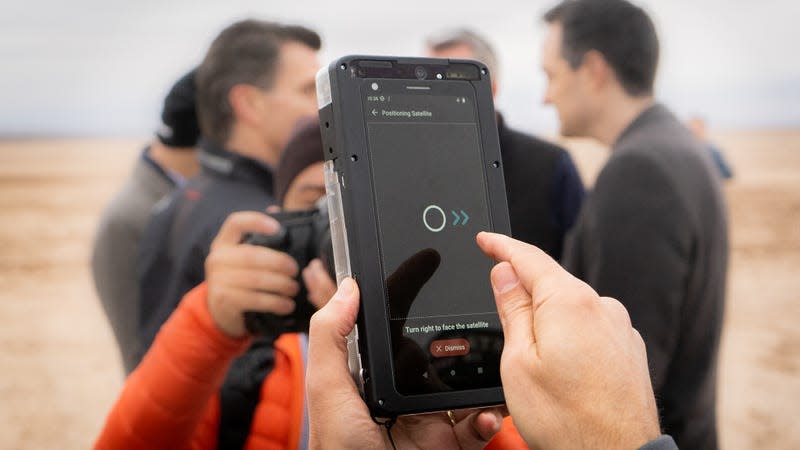
Snapdragon Satellite is the basis for what Android manufacturers can infuse into their respective Android skins later this year. It was happy news for Android smartphone users at CES 2023, even if Qualcomm offered a partially-baked demonstration. It’ll be interesting to see which brands will use the satellite integration first, but don’t expect to see much until later in 2023. —Florence Ion
Fossil Gen 6 Hybrid Wellness Edition
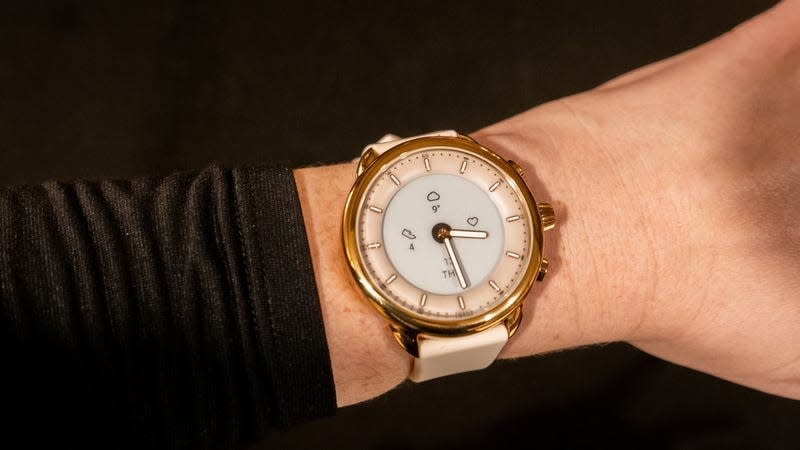
I’ve long been a fan of Fossil’s hybrid smartwatches, though I fell off the grid once Wear OS figured out what it was doing with its life. These e ink-based smartwatches are enticing, however—my femme side is particularly attracted to the rose gold one with the blush-pink band. Fortunately, they’re swappable with any third-party 22mm watchband, which bodes well for the collection I’ve accrued over the overs.
The Gen 6 Hybrid Wellness Edition features two side buttons, a home button, and a microphone that lets you call your contacts or on Alexa—the latter is optional. There’s also a haptic motor bundled inside, sensors for heart-rate tracking, blood oxygen monitoring, and wi-fi and Bluetooth connectivity. Fossil advertises up to two weeks of battery life on a single charge.
One interesting tidbit I learned while checking out these watches: Fossil told me that most of its e ink watch wearers are iOS users who want something a little more traditional than the Apple Watch. Its Wear OS-based watches also work with the iPhone for anyone who wants to straddle the line between ecosystems to wear something a little more fashionable than the status quo. —Florence Ion
eBuyNow Moto Watch 100
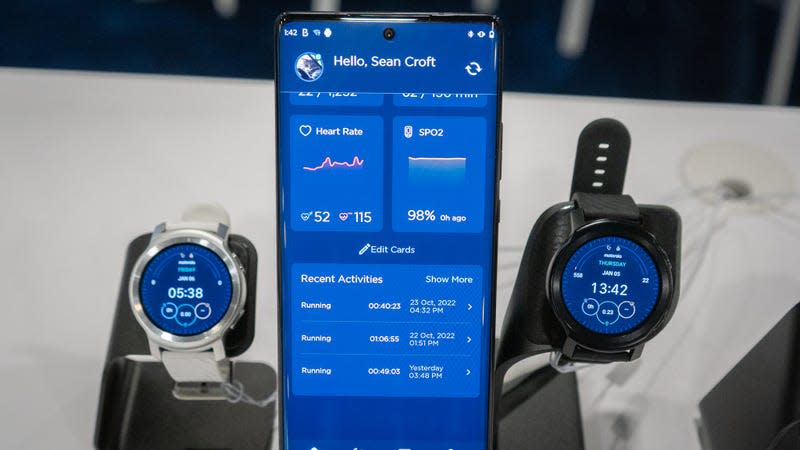
Yes, this is technically a Motorola watch. It’s not made by Moto but rather by a company called eBuyNow. Most of the company’s smartwatches are affordable alternatives to other Wear OS offerings from brands like Samsung and Google. However, what I found most compelling about the Moto Watch 100 is that this model costs only $100 and features a host of premium smartwatch capabilities. At CES 2023, the company also announced a software update that adds fall detection to the affordable watch. —Florence Ion
L’Oreal HAPTA
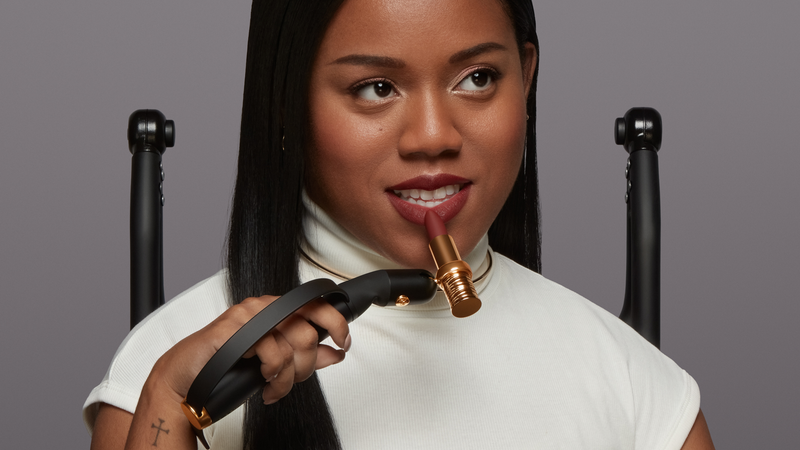
There is plenty of beauty tech to see on the CES show floor. One of the more exciting pieces of news this year came from L’Oreal, which debuted an accessible makeup application device called HAPTA. The gadget is designed to steady motion for folks with disabilities so they can apply their lipstick, blush, and eyeshadow more easily. L’Oreal plans to pilot the device on its Lancome brand beginning this year. —Florence Ion
Nose Metal

Admittedly, I was not feeling this booth when I walked by. There was loud music playing and flashing lights, which was just too perfect a trigger for a migraine. But on the other side of the menagerie was the Nose Metal, a motion pillow that helps adjust your head and neck so that you snore less at night. The name might sound silly, but when I was pitched the idea, I realized this was something I could use myself now that my smartwatch pegged me as a snorer.
Nose Metal works similarly to the way a smartphone or smartwatch tracks snoring. There’s a subtle box you put next to the bed on your nightstand to listen to figure out your sleep habits. As it listens, it tells the pillow you’re laying on how to adjust so to increase airflow to your nose and throat. The lights in the picture featured here aren’t typically a part of the pillow—Nose Metal added them for the show floor demo to illustrate the different “zones” that automatically adjust as you sleep. —Florence Ion
Bird Buddy hummingbird feeder
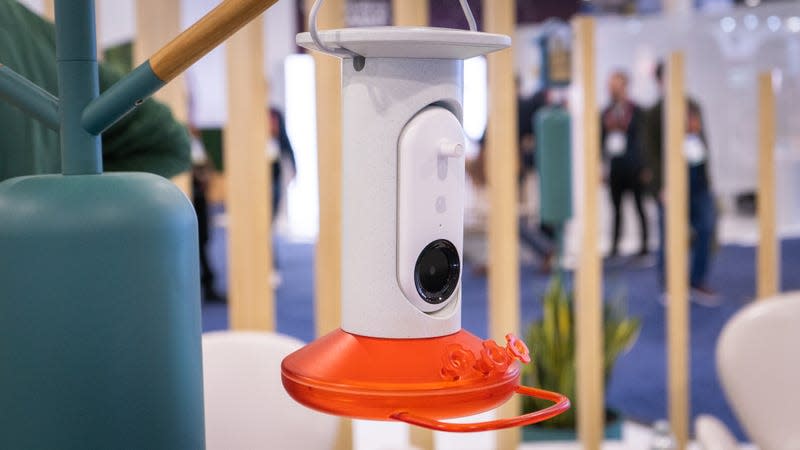
Fancy yourself an amateur ornithologist? Or are you just a fan of providing the free bird buffet to the visitors? Listen, I’m a parent in the suburbs and all I do is look at the birds out my window, so Bird Buddy caught my eye early on in the show.
Bird Buddy is a smart bird feeder that uses artificial intelligence to help identify the species of birds feasting in your backyard and other creatures. At CES 2023, the company announced it’s launching a hummingbird feeder version of its bird feeder, along with a host of new accessories. The hummingbird feeder will be available later this year. —Florence Ion
HTC Vive XR Elite
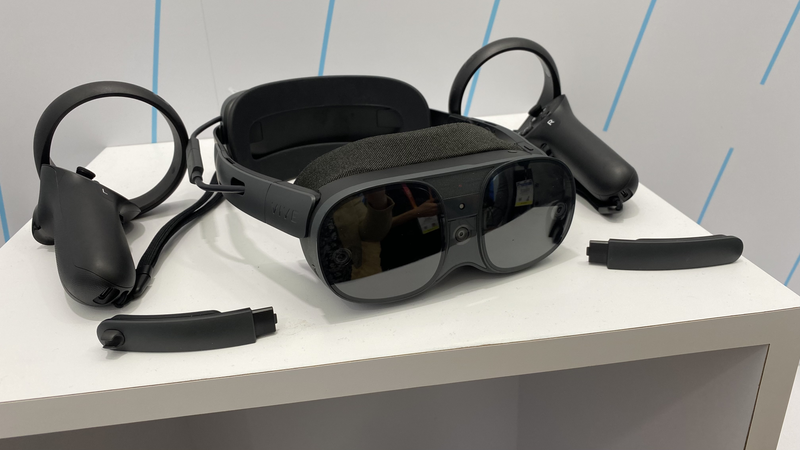
The HTC Vive XR Elite is HTC’s answer to the Meta Quest Pro, coming in at $1,100 (as opposed to the Quest Pro’s $1,500). What you get is a sleek, glasses-like VR headset that feels lightweight thanks to a small lens enclosure and an easily adjustable headband that balances out the weight on your head. You can even detach it from the battery cradle that sits behind your head and wear it like a proper pair of glasses, which works pretty well thanks to the full color video passthrough. You’ll just want to supply your own external battery pack, which you can do via USB.
Coming with sensorless room scale VR and controllerless hand tracking, this 4K headset presents a compelling alternative to Meta’s $400 more costly headset. It’s also got lenses that can dial in to different prescriptions, so it can accommodate most glasses-wearers with the default lenses. It’s still got controllers if you need them, plus wrist straps for better hand tracking, and I was able to play whack-a-mole, paint in 3D space, and conduct a virtual orchestra with ease during a demo of the device. HTC’s been lagging behind when it comes to consumer-facing standalone headsets, so this device’s release and price point is a clear shot across Meta’s bow. - Michelle Ehrhardt
D30 Can Stop A Maniac (Me) From Crushing My Hand
No, of course, I should say right off the bat that I do not recommend wailing on your hand with a small hammer. Although I am the type of person who watched infomercials as a kid and would think “you’re not even trying” as the people on screen tried to beat a Tupperware container to death with a hammer.
So when the folks at D30, who created a non-Newtonian fluid product, gently tap themselves to show off its protective properties, my first thought is to take a swing instead.
D30 has been around for a while, and I’m not the first person to go overboard to test the gel’s properties. The shock-absorbing tests are pretty dang fun though. I take a lot of hits to the hand in my multiple hobbies (don’t ask, or do ask, either way, it involves long pieces of metal), and I know how dangerous blows to the hand can be and how debilitating it is when you break any one of the 27 bones in your hand. The company was there advertising their product’s use in knee and head protection, as well as some phone cases companies have made using the licensed material. - Kyle Barr
Xorbis Sketcher X
The long and short of it: The Chinese company Xorbis put a disembodied head on a six-axis robot arm and made it draw CES attendees.
The company said the project was a test of how machine learning, especially those based on GPT3 models, can expand psychotherapy or education, though I probably wouldn’t want therapy from this model. The robot face’s lips actually move too, and as the robot arm scribbles on a sheet of paper it responds to questions from the subject, though with a pretty long delay between question and answer. Unfortunately, its eyes never really move away from the subject. It blankly stares at its subject matter constantly, drawing out the few minutes as it takes to sketch the bare outlines of the attendee.
Was it creepy? Yes, absolutely. But the real question I know you’re asking is how good of an artist is it? Watching it draw was like watching a 3D printer construct an image. It did not create long, clean lines but jerky, short scribbles that eventually constructed an outline of the CES-goer. -Kyle Barr
AromaPlayer
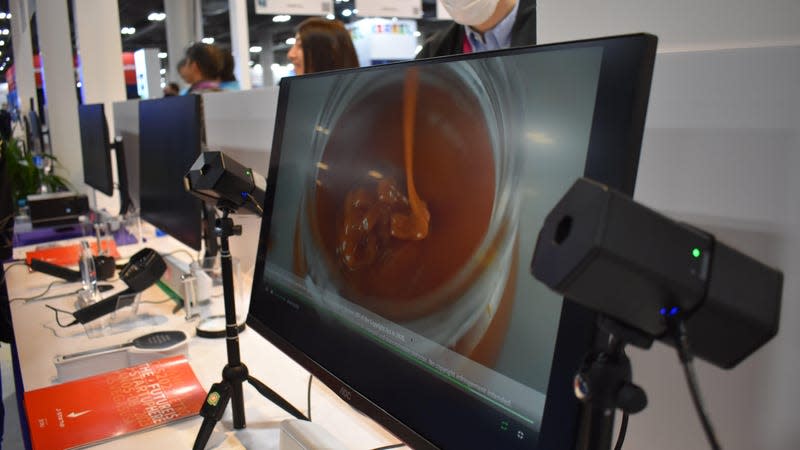
Do you remember the scene from The Matrix where the ever-districted Mr. Anderson has his head turned by a woman in a red dress? What do you think that woman smelled like?
No, seriously, answer the question. What did the woman smell like?
The company AromaJoin tried to answer the question with its AromaPlayer, a kind of smell-o-vision the company is promoting to add smells to videos. The company had two products to display. One was two towers sporting smell capsules that blasted my face with cloying scents that almost made me gag. The screen showed the red dress scene from The Matrix and the machine sneezed a kind of fruity scent that the company rep told me was supposed to be perfume.
Other videos included scenes from Pokemon where Pikachu does his thunderbolt, and then I’m hit with lemon scent, for some reason. At least when AromaJoin showed an image of caramel, it actually smelled like caramel. The company did say users could set how strong the blast of air could be, but that wouldn’t change just how artificial these smells smelled. There are apparently 100 scents to choose from, but will any be the perfect scent to watch your favorite anime to? Well the thing isn’t necessarily built for direct retail, and the company is hoping to sell its tech for different media companies.
The other device the company displayed was a collar that wafted these same scents into my face. It was less intrusive, but I wouldn’t be the first to step up if any companies try and stick that into any kind of VR or movie experience. -Kyle Barr
Wehead
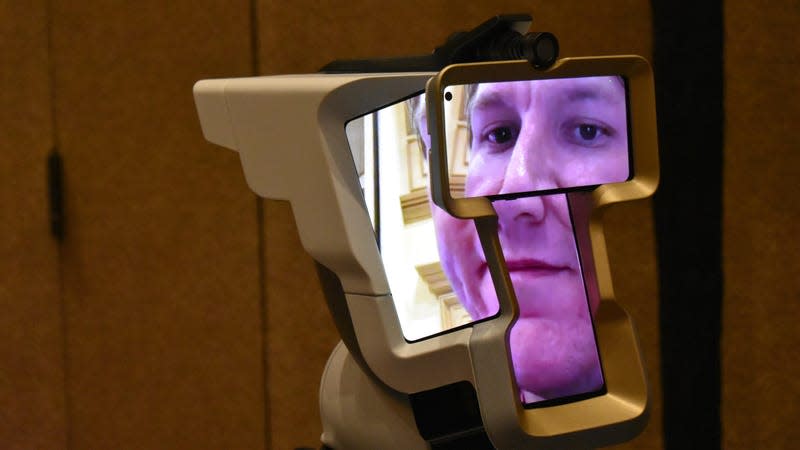
Imagine four phone displays duct taped together to roughly create the shape of a human head. Then put that configuration on a two-axis motor to let it swivel around, and you’d have something close to the Wehead. The motorized avatar is made to allow people communicating remotely to have more of a “physical presence” in a meeting. It certainly does that. If I had this thing sitting on a table during our weekly editorial meeting, I probably couldn’t stop staring.
The device is supposed to track the users’ head movements via the connected app, though the demo the developers showed made it seem like it struggled to keep the face squarely on the users’ eyes. That could be because of poor connection, but it was noticable.
But beyond any kinks that can be ironed out later, it’s such a strange piece of technology, it makes remote meetings even more awkward for everyone involved. - Kyle Barr
Chefling
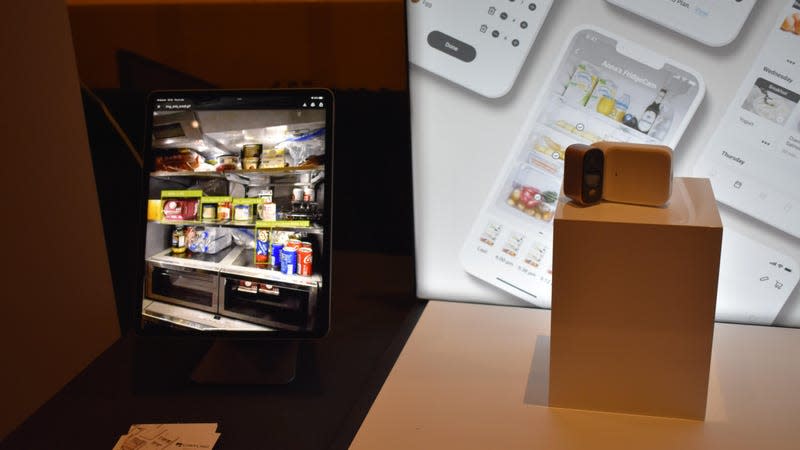
There were a few products on the CES show floor using AI to identify the content and dietary information of a plate of food. There are also plenty of smart fridges out there that let you see inside your fridge to see if you’re out of milk, but what struck me about Smarter’s internal fridge camera was that they use similar technology to facial recognition.
The new cameras aren’t necessarily new, but the product slate including the new FridgeCam2 include some new editions with bigger batteries, including one with a fist-sized battery that the company claims lasts up to three months before needing a recharge. The company rep told me they were using DeepMind technology and machine learning to identify products within the fridge.
The company recently purchased the company Chefling, so the company wants to add the startup’s food database for its image recognition tech.
These products make me imagine a world where the predictive software was used to identify yogurt brands rather than the tool for dystopian levels of over-policing, especially when such systems fail they can pose harmful, even deadly consequences. -Kyle Barr
Respiray
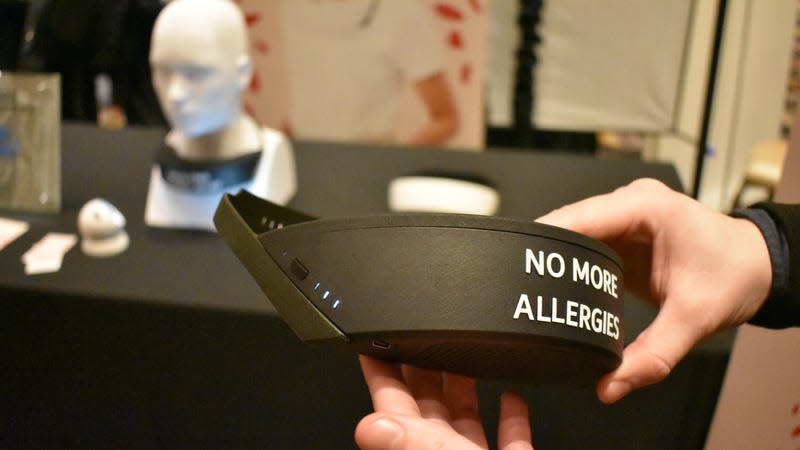
It’s a prison collar to help people with allergies from sneezing up a storm when they’re dusting the shelves or playing with the family dog. I personally don’t have any allergies, and its not like there was a dust storm in the dry Nevada desert I could use to test out its capabilities.
Otherwise, Respiray is a rather simple device worn in a curious place. The device sucks air from the bottom through a HEPA filter before blowing the clean air up at your face. I asked the company reps what happens if the dust or dander falls from above, and they said the air current creates a kind of “shield” from your mouth, nose, and eyes. Again, I had no way to test its capabilities, but I remain skeptical. What’s more, instead of having reusable filters, you’re meant to dispose of them after enough use. This is a confusing move in this day and age, especially since washable HEPA filters do indeed already exist. -Kyle Barr
Rollkers
These prototype sandals have the kind of look if the ancient Greeks went through a dieselpunk phase. Anyway, the Rollkers promise a faster walking speed thanks to tracks and motors located on the bottom of the shoe.
The French company which demoed the device told me users can see a two-times improvement in walking speed, near 7 MPH, though based on what I saw they reached a top speed of your average New Yorker during rush hour. The machines are meant to increase speed without forcing people to change the way they walk, though the device won’t work on rough surfaces like sand or carpet. All that means is the motors won’t work on that kind of terrain, and the company said it won’t restrict people from taking the stairs or the bus.
The Rollkers are similar to the Moonwalkers that were revealed last year, though the Rollkers use a track system rather than wheels. -Kyle Barr
AIPER Seagull Pro
This Seagull Pro pool cleaning robot received one of the CES innovation awards, though the image that first popped into my head was from the Love, Death + Robots episode Zima Blue where (spoilers) we learn that one of the universe’s most beloved artists was actually an artificial intelligence originally designed to automatically clean pools.
When I asked the AIPER reps about the episode, they seemed incredibly confused, so I let go of the dream of one day seeing a pool cleaning robot develop full sentience. On the flip side, I wanted to see the company’s most expensive model navigate a pool and cling to walls as it was advertised. Once I finally got to the booth, I watched as the device crawled along the bottom of a shallow pool before getting to the side of the tub, slowly start to push itself vertically before bouncing off and landing back on the bottom. The poor bot then turned around and moseyed over to the other end where it repeated its limp attempt to scale the 90 degree angle.
It may be incapable of climbing glass and things could be different for pool material as the company demonstrated in its promo videos. Though we are truly a long time from seeing any pool cleaning bot capture the world with its art. -Kyle Barr
More from Gizmodo
Sign up for Gizmodo's Newsletter. For the latest news, Facebook, Twitter and Instagram.

